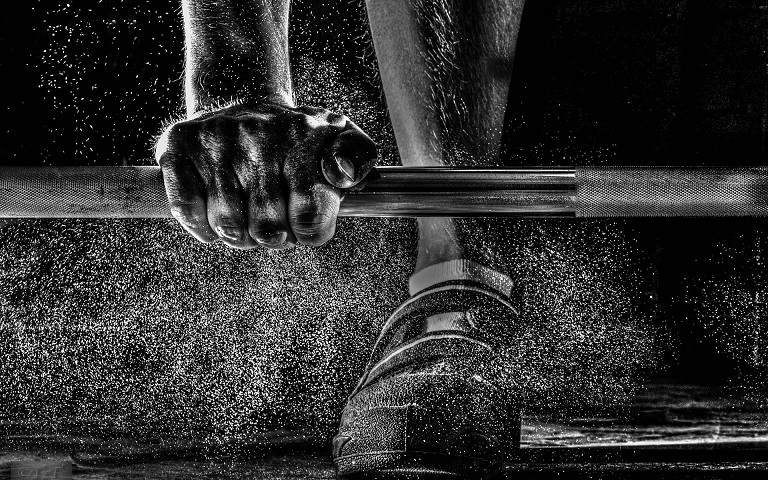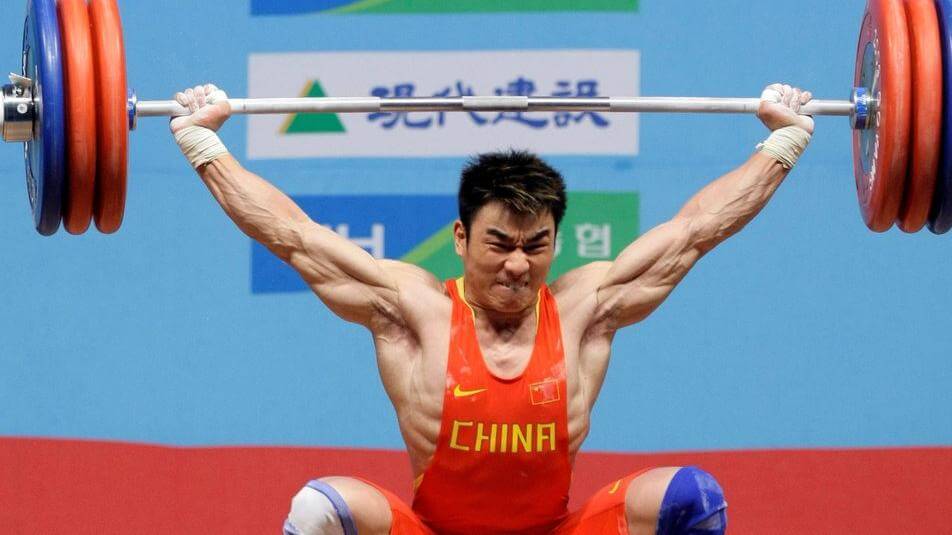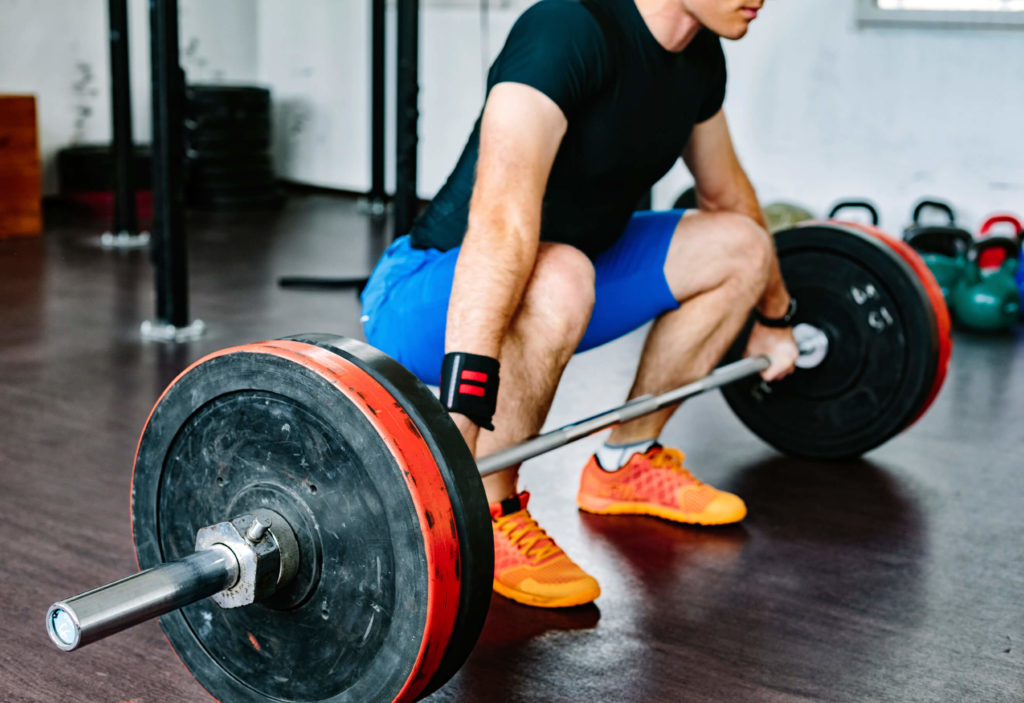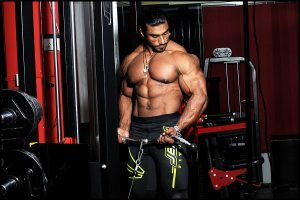
Weightlifting Rules & Regulations
Weightlifting first appeared in the Olympics in 1896, but until 1920, the inclusion of the event in the Olympic games was inconsistent. It was only from 1920 that Weightlifting continued in the Olympics as an event on its own. The objective of Weightlifting is to lift a barbell armed with weight plates in a single lift.
There are two lifts involved in Olympic Weightlifting, the Snatch and the Clean and Jerk. In the snatch, the participant needs to lift the weights in one move, lifting the barbell to an overhead position from the floor in one swift move. In the Clean and Jerk, the participant lifts the weights in a two-move lift, first from the floor to the shoulders in one move and then from the shoulders straight to an overhead position in the second move. There are 3 attempts in both types and from these attempts, the total of the two heaviest lifts, which are successful, is taken into account to determine the winner. The participant with the highest total wins the competition. The Clean and Press, which was once part of the competition, was removed because it was difficult to judge.
Weightlifting is different from other strength and endurance sports because whereas other sports only test the limits of strength of athletes, Weightlifting tests strength in combination with movement. As such, Weightlifting is a part of endurance and strength training for all athletes, even away from Olympic Weightlifting.
Weightlifting is governed by the International Weightlifting Federation (IWF), which was founded in 1905 and is based out of Budapest.
# Weightlifting History: Weightlifting has been a display of strength since the start of the human civilization and was always associated with competitions to find out who could lift the heaviest. The earliest of these competitions were recorded in Egypt, Greece and China in ancient times. But weightlifting competitions were mostly for men and the first World Wrestling Championships was held in 1891, where all participants competed together regardless of their weights. Women’s World Wrestling Championships took shape almost a century later in 1987.
Weightlifting, when it was first introduced in the Olympics in 1896, was a part of the field event. After missing out in 1900, Weightlifting returned to the Olympics in 1904, again as a track and field event, only to be removed for the next two games. In those two appearances, Weightlifting was divided into two events, one-handed lifting and two-handed lifting. Launceston Elliot of Scotland was the first one-handed Olympic Weightlifting Champion, and Viggo Jensen of Denmark was the first two-handed Olympic Weightlifting Champion, in 1896.
Weightlifting returned to Olympics again in 1920, and this time, it was not included in the track events, instead, it was an event on its own. 14 countries participated, however, there were no separate weight groups, and all competitors competed against each other, regardless of their weights. In 1924, weight groups were first introduced in the Olympics and by 1932, there were 5 weight groups. The one-handed event was removed from the Olympic curriculum in 1928.
From 1972, the modern Olympic Weightlifting took shape as only the Snatch and the Clean and Jerk events were allowed. Women’s Weightlifting was introduced in the Olympics in 2000.
# Weightlifting Rules & Regulations
The following rules and regulations are followed in Olympic Weightlifting:
- There are two lifts involved, the snatch, and the clean and jerk. On successful completion of an attempt, weight is increased at least by 1 Kg
- The bar used in Olympic Weightlifting is different for the men’s and the women’s event. The men’s bar weighs 20 Kg and is 2.2 meters long. The women’s bar weighs 15 Kg and is 2.01 meters long.
- All athletes are weighed 2 hours before the event so that it can be verified that each of them is eligible for their weight group.
- If an athlete does not fully extend his or her arms when the bar is raised, it is called Press-out and it is illegal and can cause disqualification.
- The Snatch should be carried out in one swift motion without pause.
- During Clean and Jerk, in the second part when the barbell is positioned above the head, the legs should be in lunge position, which means that one leg should be in front of the other.
- There are 8 men’s classes or divisions based on their weight, 56 Kg, 62 Kg, 69 Kg, 77 Kg, 85 Kg, 94 Kg, 105 Kg and 105 Kg and over.
- There are 8 women’s classes, 48 Kg, 53 Kg, 58 Kg, 63 Kg, 69 Kg, 75 Kg, 90 Kg and 90 Kg and above.
- In case of a tie, the athlete who has the lower bodyweight is adjudged the winner. If after a tie, even the body weights are the same, the athlete who lifted the weight first is declared the winner.
- During the Olympics, first event is the Snatch, and there is a short break after that and the Clean and Jerk happens after the break.
- There are two side judges and one head referee, who give individual judgements on their observation. Their decisions are noted by a white light for a successful lift and a red light for an unsuccessful lift. For any event to pass, there have to be two successes.
- Incorrect movements: Touch the barbell with his / her footwear. For example, spinning or adjusting the barbell with the feet is not allowed and will result in a no-lift ruling.
# How to Weightlift?
The main purpose of Weightlifting is lifting the barbell in a perfect motion. It is a combination of balance, power, strength, flexibility, stamina and concentration and also requires a great lifting technique. In addition, Snatch needs lifter to have a perfect balance. But it also requires a great deal of determination to perfect the sport. As with many other sports, owing to plenty of weights involved, there are safety issues associated with Weightlifting and these have to be kept in mind before starting out. One must ensure that the weights are properly fixed to the bar because failing so can cause the weights to fall on to the head or the body and it would be catastrophic.
Weightlifting can be scary, but with proper technique, it is possible to become better at it. During starting, it is extremely important to practice lifting, as during the competition only a perfectly executed lift is taken into consideration. For this, one should repeatedly practice with an empty bar to perfect their form. When one is ready to start lifting with weights, it is vital to choose the correct amount of weights. Too much is just as harmful as too little and along with the weights, the number of repetitions is also important. Muscle failure will come into play and one must be safe and also slowly push one’s limit to increase their abilities.
To get the best results, athletes use 6 basic techniques, the Hang Clean, the Power Clean, the Push Press, the Clean and Press, the Hex Bar Deadlift and the Snatch. Ideally, one should start with the empty bar and increase weights as one’s capacity increases.
Olympic Weightlifting is a hugely popular sport and with proper techniques can be used by the average person to build stamina, strength and confidence. Apart from a sport, it is a great way to stay fit, as weightlifting is a full-body exercise.








